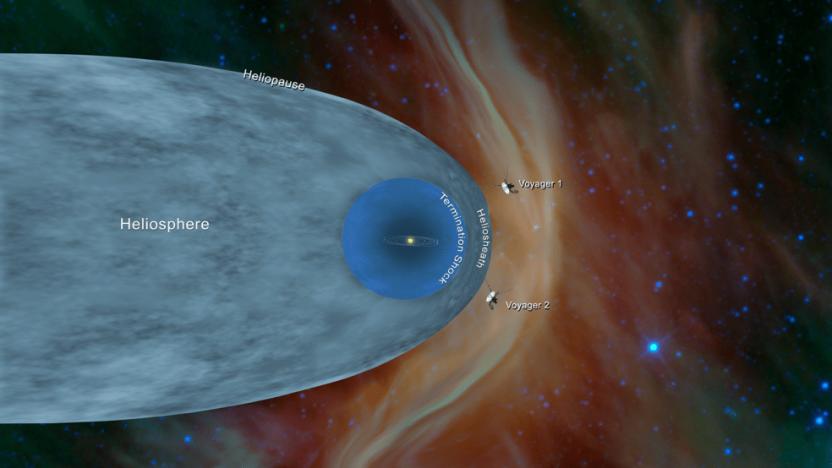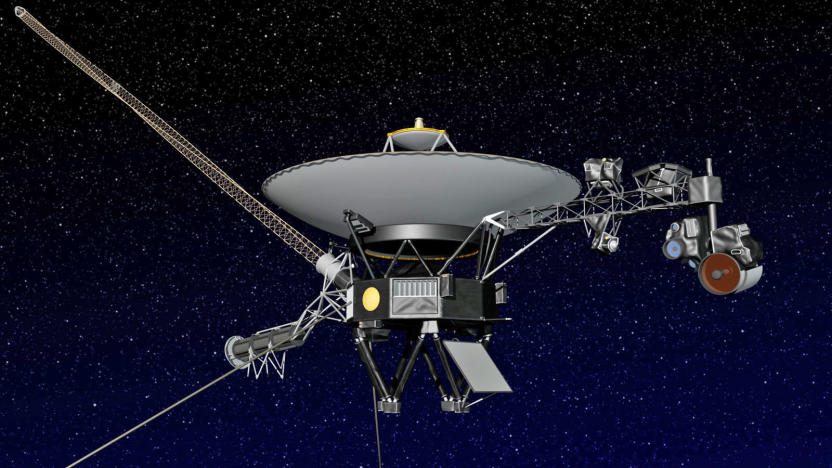interstellarspace
Latest

NASA’s Voyager 2 probe has entered interstellar space
NASA's Voyager 2 spacecraft has exited the heliosphere -- the plasma bubble created by the sun that encompasses most of our solar system -- and entered interstellar space, making it the second human-made object to do so. Voyager 1 hit this milestone in 2012. NASA said Voyager 2 crossed over the heliopause, the boundary between the heliosphere and interstellar space, on November 5th and the probe is now more than 11 billion miles from Earth.

Voyager 2 probe may be on the edge of interstellar space
NASA's Voyager 2 probe may be close to joining its sibling and entering interstellar space. The vessel has been detecting a five percent increase in cosmic rays since late August, suggesting that it's close to crossing the heliopause (the edge of the solar wind bubble, aka the heliosphere) and entering the interstellar realm. Voyager 1 saw similar increases in May 2012, so its fellow spacecraft may be in for a repeat.

NASA's Voyager 1 escapes our sun's warm embrace, becomes the first man-made device to enter interstellar space
NASA satellite Voyager 1, at 36 years young, is the first man-made object in recorded history to enter interstellar space. Moreover, it's apparently been doing so for around one year -- NASA scientists at the Jet Propulsion Laboratory announced as much this afternoon, and explained how they were tipped off. "We have an instrument on board which can measure the density of ions, the plasma which is out there," Voyager project scientist Ed Stone said in a prepared video. "In March of 2012, it turns out there was a massive eruption from the sun which eventually reached Voyager 1 in April of 2013. When that blastwave reached Voyager 1, it caused the plasma around Voyager to vibrate or oscillate in a certain particular tone. Literally the sounds of interstellar space." The satellite was originally launched in September 1977 in the interest of studying our own solar system as well as the interstellar medium. Having checked the first of those goals of its list, Voyager 1 is apparently head down on the second one. The satellite was thought to have reached interstellar space some time ago, but now NASA says it's really for sure. We wish it the best of luck exploring the icy void of space between solar systems. Remember to bring a towel!


